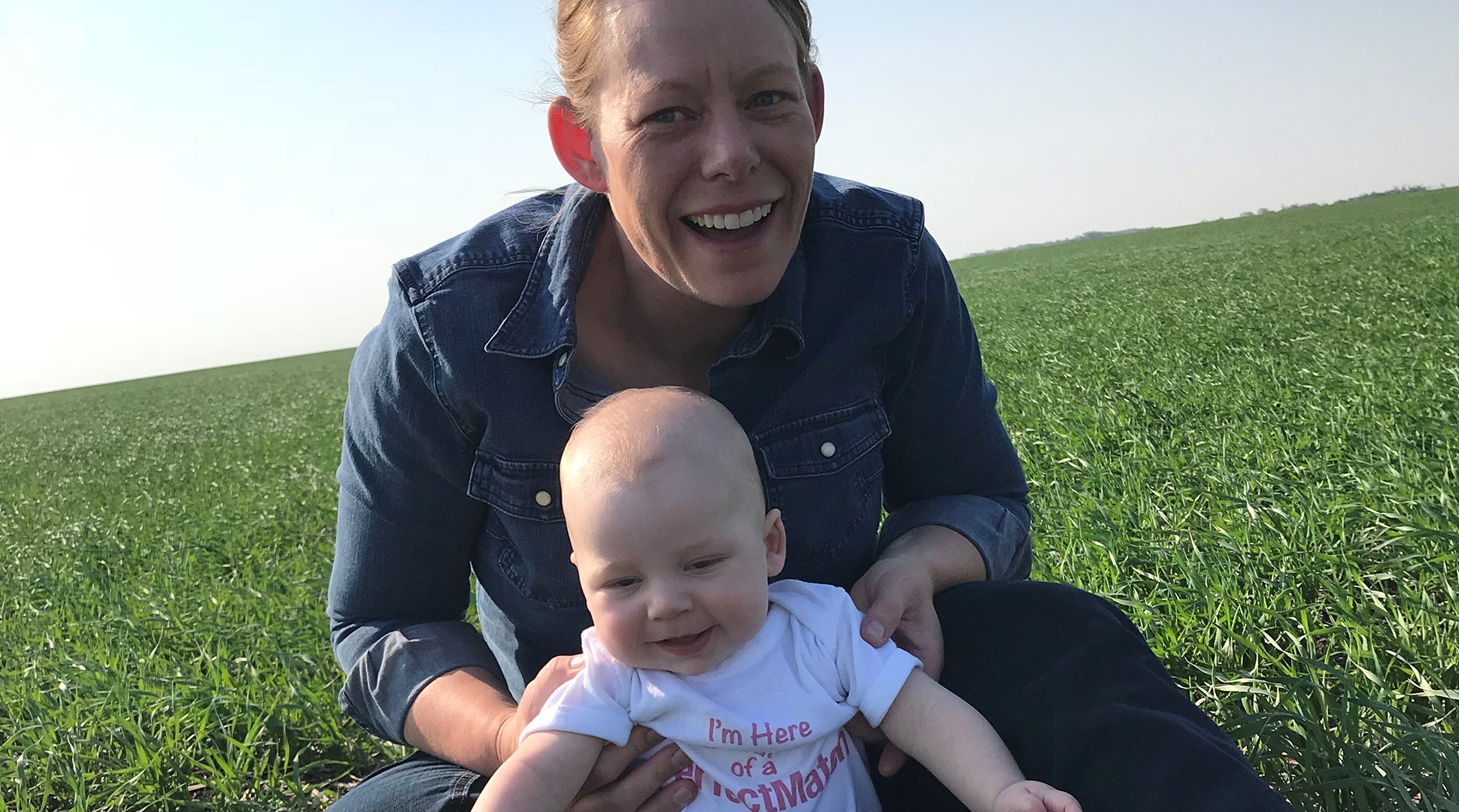Sarah Lovas is a mom, a farmer, and an agronomist. She shares her knowledge in this deep dive into why farmers use pesticides.
By Sarah Lovas
I am a farmer and also an agronomist. My job requires decisions regarding pesticide use. A pesticide is any substance intended for preventing, destroying, repelling or mitigating any pest. Commonly used pesticides in agriculture are herbicides (control weeds), insecticides (control insects) and fungicides (control diseases). Here are some facts to help clarify misinformation about agricultural pesticide use.
- Taking care of the water and the land is important to farmers. We live at the point source of pesticide applications. Clean drinking water and preserving land for future generations is critical.
- All agricultural production systems, including organic production, use pesticides. Remember, a pesticide is any substance used to control a pest. Sometimes organic pesticides are called biologicals or bio-pesticides. Bacillus thuringiensis (Bt) is an example of a biopesticide. Bt is a bacterium used to control certain caterpillar species and is used in both organic and conventional production systems. Organic producers can apply Bt to crops as an insecticide and conventional producers use Bt as a GMO trait in corn and cotton. The incorporation of Bt through GMO technology decreases the amount of foliar insecticides applied to conventional grown corn and cotton.
- All pesticides, including organic and conventional, have different toxicity levels. Toxicity levels are described by the signal word on the label (http://npic.orst.edu/factsheets/signalwords.pdf) “Caution” means slightly toxic, “Warning” means moderately toxic, and “Danger” means the pesticide is highly toxic. The LD50 determines which signal word is placed on the label. All pesticides, organic and conventional, have a label with a signal word indicating its toxicity level. To help understand the relative toxicities of pesticides, here is an article with more information: https://www.ag.ndsu.edu/cpr/weeds/homemade-herbicide-08-28-14. This article compares glyphosate, the active ingredient in the commonly used conventional herbicide Roundup, to some household items with herbicidal properties.
- Pesticides are regulated by the Environmental Protection Agency (EPA). The EPA governs the registration, labeling, distribution, and sales of all pesticides in the USA. The pesticide allowable residue limits on food and feed are determined by the EPA and enforced by the Food and Drug Administration (FDA). The pesticide label is the law and pesticide applicators must follow application requirements on the label or they will face legal ramifications. For more information about pesticide regulation, see: https://www.epa.gov/pesticides
- Pesticide application decisions are taken seriously by farmers and agronomists. We don’t use pesticides on a whim. We use Integrated Pest Management (IPM) to make decisions. IPM uses several pest management strategies, including incorporating crop rotation, using resistant varieties, tillage practices, and crop scouting to determine the severity of a pest problem and determine when and if a pesticide application is needed. For example, soybean aphid is a pest that feeds on soybeans. Insecticide applications are not applied until the soybean aphid population has reached 250 aphids per plant on 80% of the field with increasing numbers. The “increasing numbers” statement is important because sometimes beneficial insects can parasitize or eat aphids causing aphid numbers to decrease, in which case an insecticide application would not be recommended. For more information about IPM see: https://www.ag.ndsu.edu/publications/crops/ipm-basics-integrated-pest-management-in-north-dakota-agriculture/pp863.pdf
